How Do Solar Fence Lights Compare to Wall Lights for Outdoor Boundaries?
Picking the right lights for your fence or wall is like choosing the perfect frame for a painting—it can make or break the vibe of your outdoor space. I’ve stood in my backyard at dusk, debating whether solar fence lights or wall lights would better highlight the perimeter without turning my yard into a runway strip. Both harness free solar energy, but they serve different purposes: fence lights keep things subtle and focused, while wall lights make a bolder statement. Whether you’re securing a garden boundary or jazzing up a patio wall, the choice hinges on how you balance function, style, and durability. Let’s dive into the nitty-gritty—direction, brightness, design, and more—to figure out which delivers the best glow for your outdoor boundaries.

Lighting Direction: Focused Beams vs. Wide Glow
The biggest difference between solar fence lights and wall lights is how they cast their light. Fence lights typically point downward, spotlighting the ground below to guide foot traffic along paths or define property lines. Wall lights, on the other hand, spread their glow outward or upward, washing walls or nearby areas with broader illumination to create ambiance or highlight architectural features.
Key distinctions:
- Fence Lights: Narrow beams (90-120 degrees) focus light downward, ideal for low-level edging or marking fence posts without blinding passersby.
- Wall Lights: Wider diffusion (180-360 degrees) lights up larger areas, like patios or entryways, making them great for social spaces or security.
- Overlap: Some fence lights offer adjustable heads for slight diffusion, but wall lights dominate for expansive coverage.
I’ve got fence lights along my backyard perimeter—they keep the edge clear without lighting up the neighbor’s dog run. Wall lights, though, transformed my patio wall into a cozy focal point for evening hangouts. Choose based on whether you need tight precision or a sweeping glow for your boundaries.
Brightness Levels: Lumens and Coverage Compared
Brightness matters when you’re lighting up boundaries, especially if safety’s a concern. Solar fence lights typically range from 20-100 lumens, enough to mark a fence line or illuminate a short stretch of ground (5-10 feet per light). Wall lights pack more punch, often hitting 100-300 lumens to cover wider areas, like a 15-20-foot radius around a garage or deck.
Brightness breakdown:
- Fence Lights: Average 50 lumens; best for subtle markers or low-traffic zones. Think small stakes along a garden fence.
- Wall Lights: Average 150 lumens; suited for high-visibility areas, like entry gates or long walls, where distance matters.
- Color Tone: Both offer warm (2700K) or cool (4000K+) options, but wall lights’ higher output makes cool tones feel harsher in cozy setups.
Last summer, I swapped out dim 20-lumen fence lights for 80-lumen ones along my driveway fence—suddenly, nighttime walks felt safer. My wall lights, at 200 lumens, light up the whole patio, but they can overpower smaller spaces. For boundaries, match lumens to the area’s size and purpose.
Design Integration: Blending In vs. Standing Out
Aesthetics are huge in outdoor lighting—nobody wants their yard looking like a construction site. Solar fence lights are designed to be discreet, often built as low-profile caps or stakes that blend into wooden or metal fences, keeping the focus on the landscape itself. Wall lights, by contrast, are bolder, with sleek sconces or lantern-style mounts that double as decorative accents on brick, stucco, or siding.
Design pros and cons:
- Fence Lights Pros: Compact (2-4 inches tall), seamless on posts or rails; rustic or modern finishes match most fencing.
- Fence Lights Cons: Less visible by day, so they don’t add much to curb appeal.
- Wall Lights Pros: Statement pieces (6-12 inches); enhance architectural lines, especially on stone or painted walls.
- Wall Lights Cons: Larger size can clash with minimalist designs or small boundaries.
I love how my fence lights practically vanish into the wood by day but glow like fireflies at night. My wall lights, mounted on the garage, add a chic touch but demand attention. For subtle boundaries, fence lights win; for dramatic flair, go with wall lights.
Durability: Weather-Sealed Strength
Outdoor boundaries take a beating—rain, wind, UV rays—so durability is non-negotiable. Bitpott’s solar lights, with their aluminum housing and IP65+ weather sealing, stand out for toughness. The aluminum resists rust and dents, while the IP65+ rating shrugs off heavy rain and dust, with added UV protection to prevent fading. Generic plastic models, often rated IP44, handle light showers but crack or cloud over time in harsh climates.
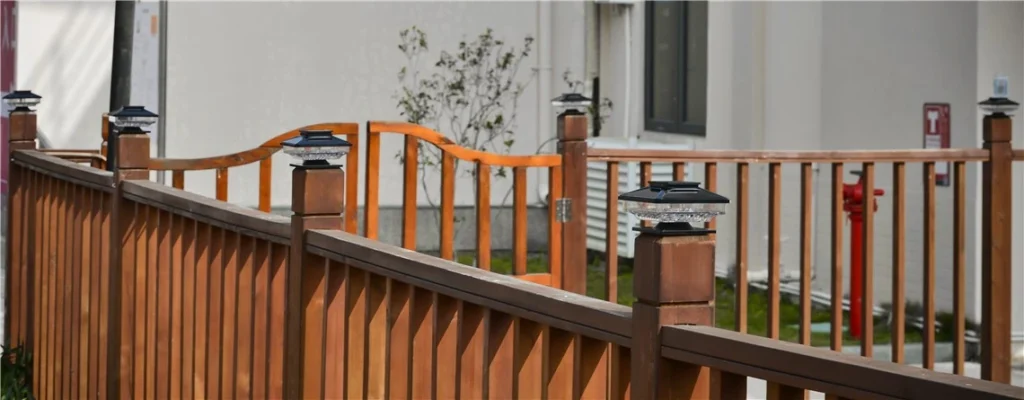
Durability ranked:
- Bitpott Aluminum (IP65+): Withstands storms, freezing temps, and sun exposure; ideal for exposed fences or walls.
- Generic Plastic (IP44): Fine for mild weather but prone to cracking in extreme heat or cold.
- Lifespan: Bitpott’s LEDs last 30,000+ hours; budget plastics average 10,000 hours before dimming.
I’ve had Bitpott fence lights survive two Midwest winters without a hiccup, while cheaper plastic wall lights yellowed after one season. For boundaries in tough climates, Bitpott’s build ensures your solar energy investment lasts.
Energy Storage: Battery Size and Runtime
Solar lights rely on batteries charged by daylight, so storage capacity directly impacts performance. Fence lights, being smaller, often use compact batteries (600-1200mAh), delivering 6-8 hours of light after a full charge—enough for most nights. Wall lights, with larger panels and batteries (1500-3000mAh), can run 10-12 hours, making them better for longer winter nights or cloudy stretches.
Storage comparison:
- Fence Lights: Smaller panels (3-5 inches) and batteries suit low-lumen output but may fade in low-sun conditions.
- Wall Lights: Larger panels (6-8 inches) and batteries store more solar energy, ensuring consistent performance.
- Tech Edge: Monocrystalline panels (20% efficiency) in both outperform polycrystalline (15%), especially in Bitpott models.
One cloudy week, my fence lights dimmed early, but my wall lights kept going strong. If your boundary needs all-night reliability, wall lights’ bigger batteries are the safer bet.
Cost Efficiency: Long-Term Savings Breakdown
Upfront, solar fence lights are cheaper—$5-15 per unit versus $20-50 for wall lights—but long-term costs depend on durability and maintenance. Bitpott’s higher initial price offsets with fewer replacements (1-2 battery swaps over 5 years vs. 3-5 for generics). Both leverage free solar energy, but wall lights’ larger batteries can mean pricier replacements ($10-15 vs. $5-8).
Cost factors:
- Initial Investment: Fence lights: $50 for 10 units; wall lights: $100 for 5 units covering similar space.
- Battery Replacements: Bitpott’s lithium-ion lasts 500+ cycles; generics need swapping every 1-2 years.
- Energy Savings: Both eliminate wiring costs, saving $100-200 over traditional electric lights.
I crunched the numbers after installing both: My Bitpott fence lights paid off in three years through fewer replacements, while wall lights’ higher output justified their cost for my front yard’s visibility. For tight budgets, start with fence lights; for longevity, invest in quality wall lights.
Conclusion: Discreet Edges or Bold Statements
Solar fence lights and wall lights each bring something unique to outdoor boundaries. Fence lights keep it low-key, blending into posts with focused beams that guide without overwhelming—perfect for subtle garden edges or rural fences. Wall lights, with their brighter, broader glow and eye-catching designs, elevate visibility and style, ideal for prominent walls or social spaces. Bitpott’s durable aluminum and efficient batteries make both options reliable, but your choice depends on your goal: discreet safety or bold ambiance. Mix them for the best of both worlds—fence lights for tidy borders, wall lights for standout features. With smart placement and quality picks, your boundaries will shine exactly how you want, night after night.

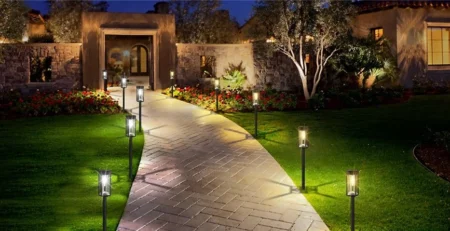
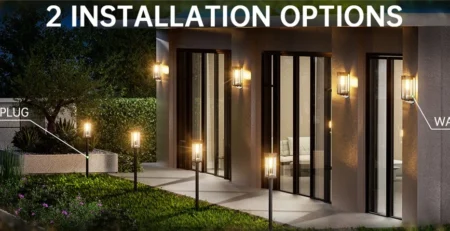
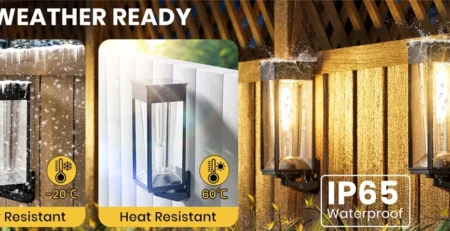
-5-450x231.jpg)
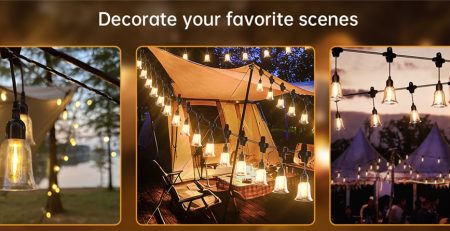
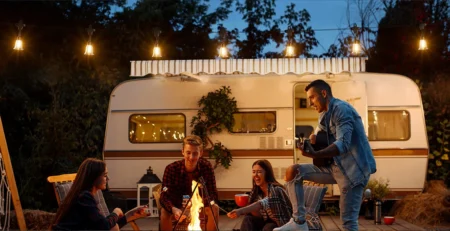
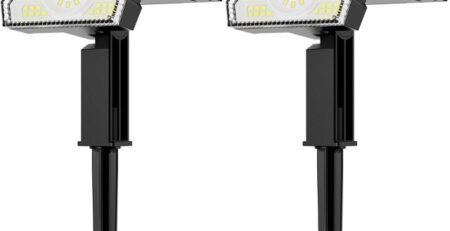
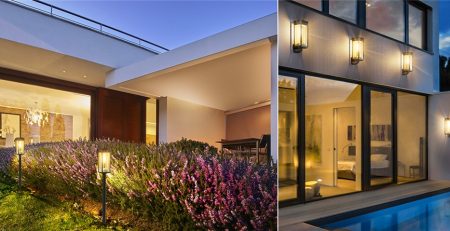
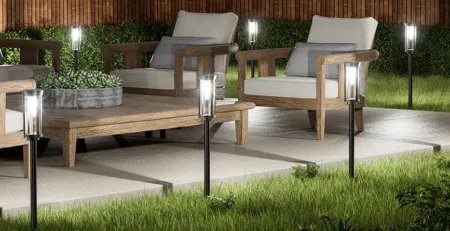
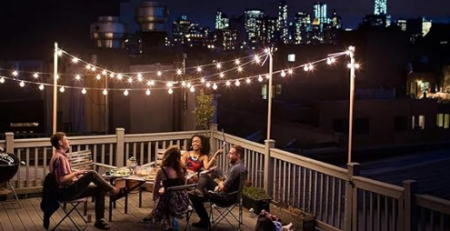
Leave a Reply